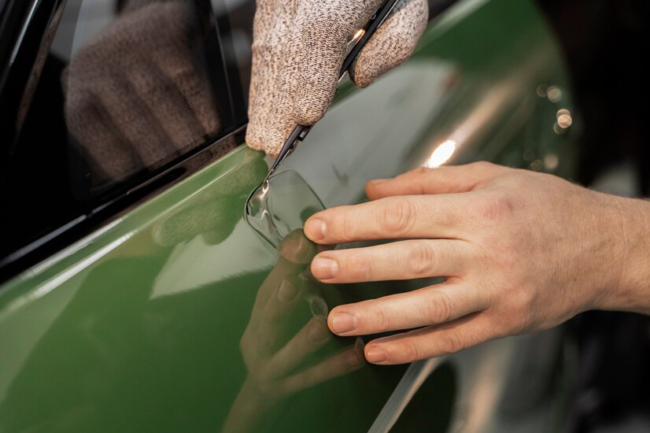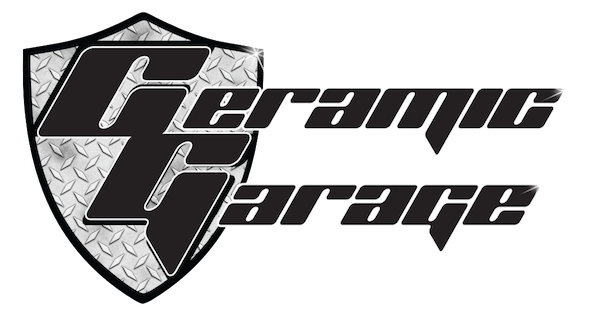In the pursuit of a more sustainable and eco-friendly lifestyle, individuals are increasingly turning their attention to innovative solutions that not only enhance the aesthetic appeal of their homes but also contribute to a greener planet. One such underrated yet impactful practice is window tinting, and its relevance to sustainable living cannot be overstated. In this blog, we delve into the intersection of environmental consciousness and home improvement, exploring how window tinting in Modesto aligns seamlessly with eco-friendly lifestyles.
Why Sustainable Living Matters in Modesto
Nestled in the heart of California’s Central Valley, Modesto is a city that not only bears the warmth of its climate but also grapples with environmental challenges unique to its region. As the effects of climate change become increasingly evident, the importance of sustainable living in Modesto takes center stage. Sustainable living in Modesto is a commitment to safeguarding the environment, promoting resilience in the face of climate challenges, and ensuring a high quality of life for current and future generations.
How Window Tinting Supports Eco-Friendly Goals
Window tinting emerges as a holistic solution that seamlessly aligns with eco-friendly goals. From curbing energy consumption and reducing carbon footprints to preserving indoor air quality and safeguarding interior elements from UV damage, the benefits of window tinting extend far beyond its initial installation. As individuals and communities strive for sustainable living, embracing window tinting becomes not just a choice in home improvement but a deliberate step towards a greener and more environmentally conscious future.
How Window Tinting Can Reduce the Urban Heat Island Effect
The Urban Heat Island (UHI) effect is a phenomenon wherein urban areas experience significantly higher temperatures than their surrounding rural counterparts, primarily due to human activities and the built environment. As urbanization continues to intensify, the UHI effect poses considerable challenges, including elevated energy consumption, increased air pollution, and adverse effects on public health.

- Reflecting Solar Radiation: Window tinting, specifically designed to reflect a significant portion of solar radiation, plays a crucial role in reducing the absorption of sunlight by urban structures. By applying reflective films to windows, the amount of solar energy entering buildings is minimized, thereby decreasing the overall heat gain within urban spaces.
- Lowering Indoor Temperatures: Beyond reducing external heat absorption, window tinting contributes to lowering indoor temperatures. By blocking a considerable percentage of infrared radiation, tinted windows act as a barrier against the transmission of heat into interior spaces.
- Conserving Energy and Reducing Emissions: The application of window tinting on a large scale in urban areas can lead to a collective reduction in energy consumption for cooling purposes. As buildings become more energy-efficient, there is a subsequent decrease in the release of pollutants from power plants, which often contribute to the heat island effect.
- Preserving Vegetation and Green Spaces: Another aspect of the UHI effect involves the replacement of natural vegetation with impervious surfaces like concrete and asphalt, which absorb and re-radiate heat. Window tinting helps in maintaining cooler indoor temperatures, encouraging individuals to rely less on indoor cooling systems and spend more time outdoors in shaded areas.
- Enhancing Building Envelope Efficiency: Window tinting serves as an integral component of a building’s envelope, contributing to its overall efficiency. By preventing excessive heat gain through windows, tinting complements other energy-efficient measures, such as insulated walls and roofs.
The incorporation of window tinting in urban planning and building design emerges as a practical and effective strategy to combat the Urban Heat Island effect. By reflecting solar radiation, reducing indoor temperatures, conserving energy, preserving green spaces, and enhancing building envelope efficiency, window tinting aligns seamlessly with the broader goals of sustainable urban development and environmental stewardship. As cities evolve, embracing such innovative solutions becomes imperative to foster a healthier, more sustainable future for urban dwellers.
Why Window Tinting is a Sustainable Design Choice
In the realm of sustainable design, where every decision holds the potential to make a positive impact on the environment, the choice of window tinting emerges as a compelling and eco-conscious solution.

- Energy Efficiency: One of the primary reasons window tinting stands out as a sustainable design choice lies in its ability to contribute to increased energy efficiency. By strategically blocking or filtering sunlight, window tinting minimizes the need for excessive artificial lighting and reduces the demand for air conditioning.
- Temperature Regulation: Window tinting goes beyond energy efficiency by actively participating in the regulation of indoor temperatures. In regions with varied climates, such as Modesto, where temperatures can soar during summers, tinted windows act as a barrier against the harsh rays of the sun.
- Protection Against UV Radiation: The sustainability of a design choice also encompasses its impact on the longevity and well-being of materials within a space. Window tinting, by effectively blocking a significant portion of harmful ultraviolet (UV) radiation, acts as a shield for furniture, flooring, and other interior elements.
- Longevity and Durability: Sustainable design is inherently linked to the longevity and durability of materials. Window tinting, when professionally applied and maintained, demonstrates impressive longevity. Its resistance to fading, peeling, and discoloration ensures that the initial investment pays off over an extended period.
- Natural Light Optimization: Sustainable design acknowledges the importance of natural light in creating vibrant and energy-efficient spaces. Window tinting strikes a delicate balance between maximizing natural light and minimizing heat gain. By allowing ample sunlight to permeate while concurrently mitigating glare and excessive heat, tinted windows facilitate a well-lit environment that reduces the reliance on artificial lighting, fostering a sustainable design approach that prioritizes energy conservation.
The decision to incorporate window tinting as part of a sustainable design strategy is a thoughtful and impactful choice. Beyond its immediate visual enhancements, window tinting actively contributes to energy efficiency, temperature regulation, UV protection, longevity, and the optimization of natural light.
Tips for Creating a Sustainable Home with Window Tinting
Creating a sustainable home through the integration of window tinting involves a thoughtful and strategic approach that extends beyond the installation process.
Here are comprehensive tips to guide you in crafting an eco-friendly living space with the help of window tinting:
- Evaluate Your Energy Needs: Conduct an energy audit to understand your home’s specific energy consumption patterns. Identify areas where window tinting can maximize energy efficiency and reduce the need for excessive heating or cooling.
- Choose the Right Window Tinting Material: Research and select window tinting films that offer optimal UV protection, insulation, and glare reduction.
- Prioritize Local Climate Considerations: Tailor your window tinting choices to the climate in Modesto, considering factors like temperature, sunlight intensity, and prevailing weather conditions.
- Combine Window Tinting with Other Green Practices: Explore synergies with energy-efficient lighting, insulation, and renewable energy sources for a comprehensive approach.
- Focus on High-Usage Areas: Identify rooms or spaces where energy consumption is typically high, and prioritize those areas for window tinting.
- Consider Dual-Purpose Window Treatments: Choose window tinting that serves multiple purposes, such as providing privacy, UV protection, and insulation simultaneously.
By incorporating these tips into your sustainable home strategy, you can ensure that window tinting becomes a cornerstone of your eco-friendly lifestyle, contributing to both environmental conservation and energy efficiency in your living space.
Advantages of Tinted Windows for Energy-Efficient Homebuyers
As the demand for sustainable living options continues to rise, prospective homebuyers are increasingly prioritizing energy efficiency in their housing choices. Among the various eco-friendly features available, tinted windows stand out as a compelling and practical solution for those aiming to reduce energy consumption and create an environmentally conscious home.
- Enhanced Insulation: Tinted windows act as a barrier against external temperature fluctuations. They provide enhanced insulation by minimizing heat transfer, keeping interiors cooler in the summer and warmer in the winter.
- Solar Heat Reduction: One of the primary benefits of tinted windows lies in their ability to effectively block solar heat. Specially designed films on these windows can reject a significant percentage of the sun’s infrared radiation, preventing overheating of interiors.
- Energy Cost Savings: Perhaps one of the most compelling advantages for energy-efficient homebuyers is the potential for significant cost savings. By reducing the need for artificial cooling and heating, tinted windows contribute to lower energy bills.
- Environmentally Friendly Cooling:Tinted windows align seamlessly with environmentally friendly cooling practices. By decreasing the demand for air conditioning, these windows indirectly contribute to the reduction of greenhouse gas emissions associated with traditional cooling systems.
- UV Ray Protection: Tinted windows are designed to block a substantial amount of harmful ultraviolet (UV) rays. This not only safeguards the health of occupants by reducing the risk of skin damage and eye strain but also protects interior furnishings from fading due to prolonged sun exposure.
The advantages of tinted windows for energy-efficient homebuyers extend beyond mere aesthetics. With a focus on insulation, solar heat reduction, UV protection, cost savings, and environmental friendliness, tinted windows offer a comprehensive solution that aligns perfectly with the goals of those seeking sustainable and energy-efficient living spaces.
Conclusion
At Ceramic Garage Inc, we believe that sustainable living is not merely a choice but a commitment to responsible practices that positively impact our environment. Our exploration into how window tinting in Modesto aligns seamlessly with eco-friendly lifestyles highlights the multifaceted advantages of this often-overlooked solution. From energy efficiency and UV protection to creating comfortable living spaces, our commitment to providing top-notch window tinting services stems from our dedication to promoting a greener and more sustainable future for the residents of Modesto. For inquiries, contact us at (209) 780-7170 and take the first step towards a more eco-conscious home.



